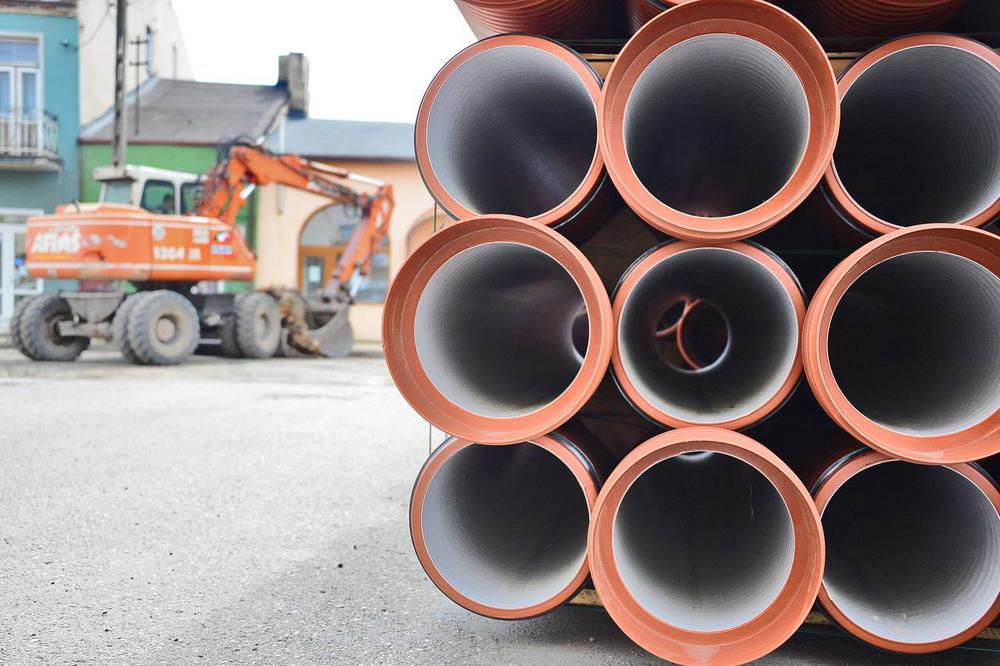This article is part of a blog series on robots, exploring what robots are and what they can do for the construction industry.
Robots revolutionize the construction industry

The construction industry is using a large workforce to complete repetitive tasks but has yet to fully embrace robotics, automation, and digital technologies to automate and streamline its processes.
Everybody in the industry is talking about Artificial Intelligence and robotics but very few firms are implementing these technologies. Those who have done it have seen a significant improvement in the following areas:
- more accuracy and quality
- quicker construction
- higher sustainability reducing waste and human errors
- saving time, money, and other resources.
How Are Robots Changing the Construction Industry?

Many different robots are already on the market. For example, brick laying machines can lay concrete blocks on concrete floors.
In the future, we predict that various innovations in automation and robotics will change the way architecture, engineering, and construction work. There is a lot of fear from traditional companies in the industry that robotics could replace the human workforce, negating the benefits in terms of efficiency, cost, and time-saving. Robotics will assist the manual workforce to perform dangerous and /or repetitive tasks, improving the safety and comfort of manual labor, but will not replace them. The return on investment will be huge as the efficiency, productivity and accuracy of the construction will significantly increase the profits of the construction businesses.
Different types of robots

What are the functions and benefits of the various types of robots currently available in the construction industry?
Brick-Laying Robot
The process of laying bricks manually has not changed in centuries. Fastbricks Robotics Ltd an Australian company has invented a brick-laying robot, called Hadrian X.
Hadrian robots using data from a 3D model can build block structures without human intervention. If you decided to use bricklaying robots, such as Hadrian, in your projects, you could produce high-quality finished concrete products. Your process would require:
- low power consumption
- no pallets and shelving
- cheaply produced concrete blocks
- minimum staff with low qualifications
3D Printing Robot
We have a blog series on 3D printing. Click here, if you would like more details
3D printing started in the mid-1980s with stereolithography, or SLA, a high-powered laser that turns a liquid resin into a solid material. SLA builds a product layer-by-layer, which makes it an additive technology. It is still the most popular 3D printing technology, even today.
Since then, many more types of 3D printing have come on the market, including:
- selective laser sintering (SLS)
- fused deposition modeling (FDM)
- direct metal deposition (DMD).
3D printing has evolved to be used in Building Information Modeling (BIM) by architectural firms to build scale models. It has now been used in more resourceful construction projects controlled by computer programming and artificial intelligence (AI).
3D printing is successful in the construction sector as the industry is under a lot of pressure to meet tight schedules and budgets.
Innovations in 3D printing will help to increase efficiency in the building sector by:
- creating construction components
- printing entire buildings
- allowing faster and more accurate construction of complex or bespoke items
- lowering labor costs
- producing less waste
HP has launched a site printing robot that marks up plans on construction sites, generating significant productivity gains.
HP SitePrint prints lines and complex objects accurately and with consistent repeatability. It can also print text bringing additional data from the digital model to the construction site. It is designed to be autonomous and can avoid obstacles.
Site security and safety
Security and safety on construction sites are paramount. The construction industry experiences theft, primarily of construction materials, due to a lack of security.
According to the National Equipment Register construction jobsite theft costs the industry up to $1 billion each year.
You can take simple security measures and use best practices to protect your construction sites but when you have expensive tools and equipment on site, robot drones are the safest tools to monitor security.
Nightingale offers a robotic aerial security service for building customers it provides:
- uncrewed aerial vehicle (UAV) docking and charging platform for policing purposes.
base stations care towed and positioned on protected sites
drones can be programmed to fly regular missions.
The drone can inspect difficult-to-reach areas of a construction site, or where dangerous machinery is located significantly reducing the potential risks of accidents to workers.
Securing areas on a construction site can prevent unauthorized people to enter a work restricted area. Drone imagery can help to locate a violation in the boundary of a confined site immediately, preventing illegal entry and potential accidents.
In maintenance work, inspecting sites with drones rather than mounting electric poles or walking alongside a busy road, workers can get images without putting themselves at risk.
Robotics can help the construction industry to improve the security and safety of construction project sites.
Autonomous or Self-driven Construction Vehicles
Chinese scientists say that by 2024 they will build a 590-foot-tall dam, at Yangqu, using AI and 3D printing without the need for human workers.
If and when it is completed, the ambitious project will be the world's tallest structure built using 3D printing processes.
The system will be used to manage an automated assembly line made of unmanned trucks to transport construction materials to the worksite. When the materials arrive, unmanned bulldozers and pavers build the layers of the dam, and then rollers equipped with sensors press each layer to get them steady and durable. The only manual intervention will be the mining of the construction material.
The system will also allow monitoring of progress continuously without safety concerns for human workers.
The AI system and its army of robots will help eliminate human error, such as:
- roller operators not keeping a straight line
- truck drivers delivering materials to the wrong area.
If successful, the building method could provide a blueprint for other construction projects, such as road construction, Liu's team said.
Autonomous robots in construction reduce manual tasks and secure:
- faster project completion
- safety
- cost reduction.
Robots for building demolition
At the end of the life cycle of a building, you will have to demolish it. Demolition mobile robots are all about:
- safety
- efficiency
- cost savings.
Demolition robots are designed to hit hard small spaces. They are appropriate to break through building materials and are used as breakers, crushers, drills, and buckets to:
- determine the blast magnitude
- pull out big sections of structures
- disintegrate pieces of material
- reduce cost in comparison to using skilled demolition teams
- improve safety.
Exoskeletons or exosuits
Exosuits are very useful on construction sites. They are made of metal, multiplying the muscle strength of the bearer and duplicating his/her internal skeletal structure.
The exoskeleton will help its user lift heavy objects without effort reducing potential injuries and improving quality and safety.
Benefits and Challenges of using robots in construction

Advantages
Let’s summarize the advantages of robots in construction and civil engineering as follows:
- to improve site safety you can control robots remotely from a safe location to access the unsafe areas
- to increase efficiency robots’ are very accurate and help eliminate human errors and costly reworks
- to meet time and cost benefit expectations, robots are faster and more productive than a human workforce, so your projects will be completed on time and on budget.
Disadvantages
Unfortunately, despite all the advantages of using robots in construction, it is not without challenges:
High initial investment
Buying robots can be expensive but in the long run, they are very cost-effective making the return on investment worth going for it.
Fear of unemployment
Manual workers are afraid to be replaced by robots as manual processes will be eliminated. Robots will assist the workforce but will not replace it.
Less repetitive tasks
Robots perform several repetitive tasks or a single task at a time, but they require new programming skills and retraining of the workforce to control them.
Maintenance
It is essential to maintain your robots so they can function efficiently. Robot maintenance is expensive and must be carefully planned.
In Conclusion

Automation and robotics and civil engineering have changed the way people work and think in the construction industry.
Adoption of automation and robotics technology has:
- improved efficiency
- increased security and safety
- reduced costs
- delivered high quality and accuracy.
At Driving Vision, we believe that the future of robotics in the construction industry is brilliant and will completely revolutionize the traditional way of operating. We can help you to decide if you need to invest in technology. Our technology diagnostic looks at the best way to incorporate new technology into your workflows and how to move your organization to cloud computing so you can open up new possibilities for your daily planning tasks and make sure your data never leaves the optimally secured data center.
The technology appraisal report will help you to explore what investment is required to improve your projects’ productivity and collaboration as well as the ROI you can expect.
A Driving Vision expert will conduct the interviews online and will issue a report and discuss our findings with you. Together we will decide the best way to implement the solutions at your pace and according to your budget.
Implementing BIM can be daunting, but Driving Vision is here to help you at the pace you are comfortable with. Get started by getting in touch now







